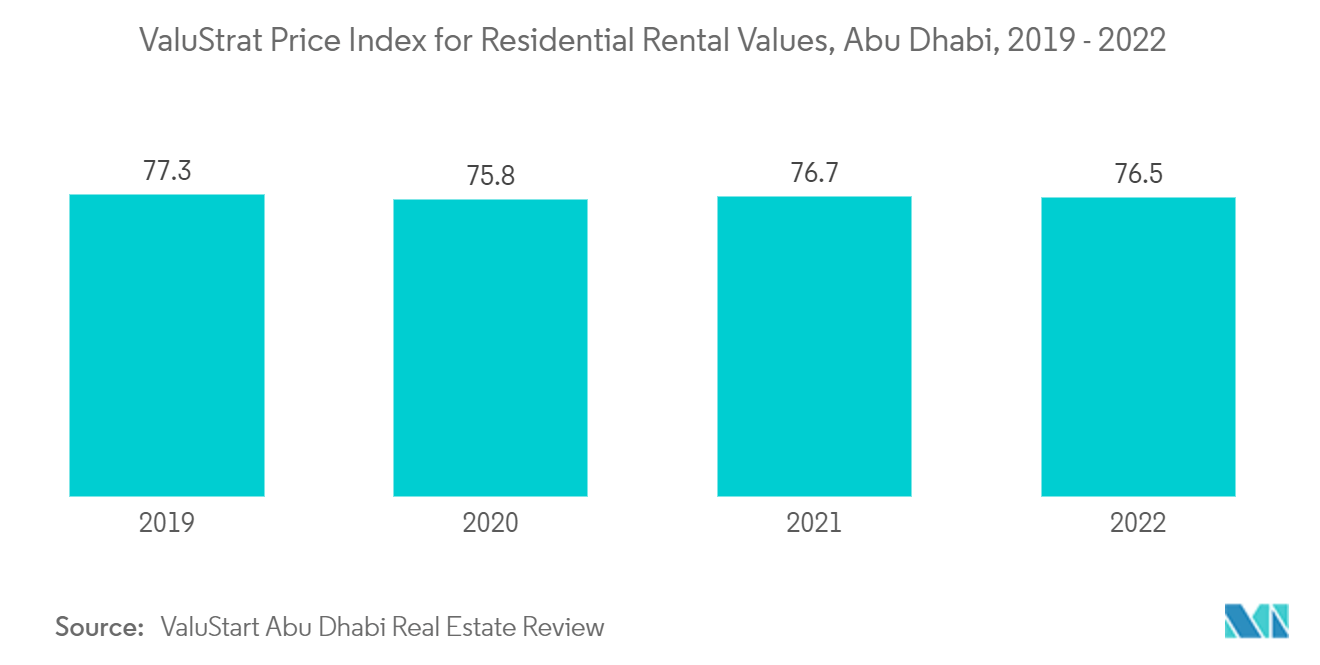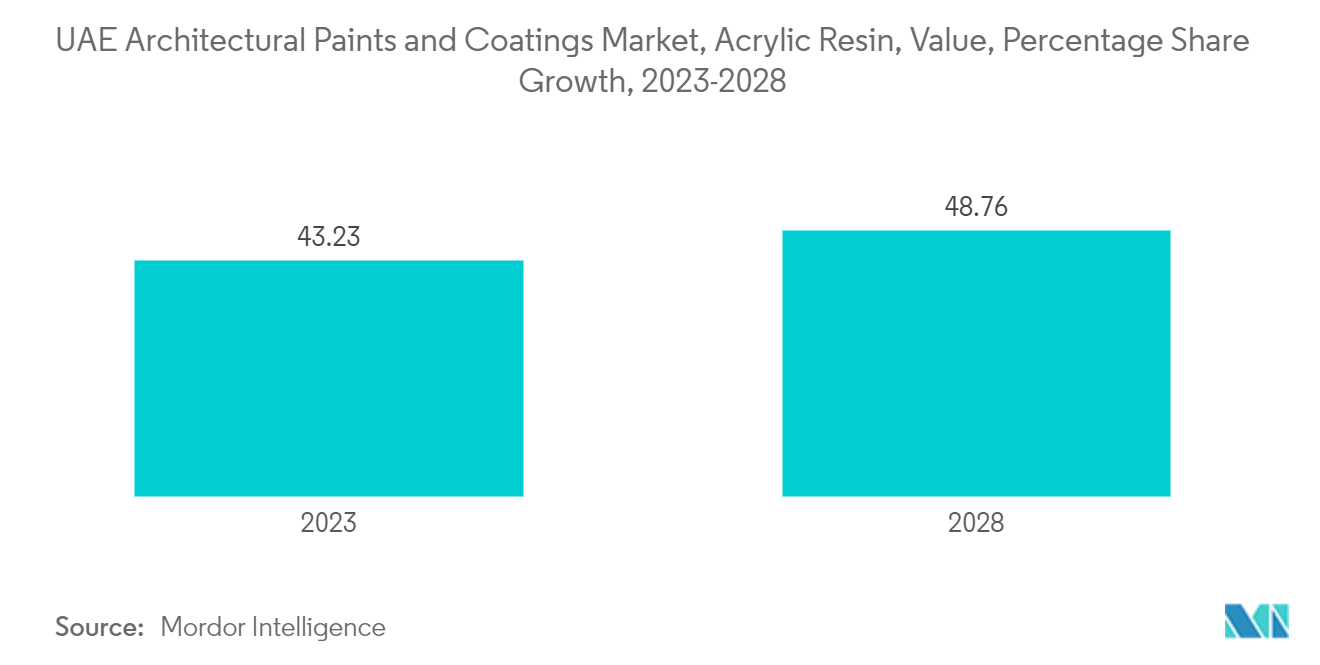Market Trends of UAE Architectural Paints And Coatings Industry
Increasing Residential and Commercial Construction in the Country
- In the United Arab Emirates, the construction sector has a promising outlook in the country of various government initiatives, such as the National Strategy of Higher Education 2030, the Sheikh Zayed Housing Program, and the Dubai Tourism Strategy.
- The construction industry of Dubai is one of the significant contributors to the UAE architectural paints and coatings market. Further, under UAE megaprojects 2023, here are 26 new developments in Dubai, Abu Dhabi, and the Northern Emirates.
- The domestic residential construction market is dominated by the United Arab Emirates' two significant cities, Dubai and Abu Dhabi. The UAE government has announced its decision to bridge the gap between the supply and demand of housing units.
- For example, in Abu Dhabi, according to ValuStrat Dhabi Real Estate review, the ValuStrat price index for residential rental villas and apartments reached 76.5 in 2022, thus fueling the market growth during the forecast period.
- According to Top Hotels Projects' January 2023 report, Dubai has 85 hotel projects under construction. There are 23,549 hotel rooms in total.
- The hospitality sector in the country is growing, too, owing to numerous investments made by various private enterprises. For example, according to a joint presentation by the UAE Ministry of Economy and UAE International Investors’ Council, healthcare spending in the United Arab Emirates will reach up to USD 26 billion by the year 2028, which will include almost 700 healthcare projects under development with a total investment of USD 60.9 billion, mainly carried out by the private sector.
- Such growth in the construction sector is expected to drive the market for architectural paints and coatings in the United Arab Emirates through the forecast period.

Acrylic Resin to Dominate the Market
- Acrylic resins account for the largest share in the market owing to its excellent color and gloss retention, as well as their superior weathering and UV resistance. The demand for acrylic coatings in the decorative coatings market has increased more rapidly than the overall market, mainly due to its low VOC emissions. This favors the demand from consumers for less harmful paints and coatings.
- Acrylic paints are the most widely used decorative paints. Acrylic coatings are primarily used in the construction industry for high-end finishes on roofs, walls, floors, and other applications.
- The application of acrylic coatings leads to high surface hardness. In specific applications, such as decks and roofing, acrylic coatings provide elastomeric finishes to improve the UV resistance of the surface if employed with some fluids.
- Further, acrylic coatings have acted as a replacement for solvent-borne coatings and other low-quality and low-durability budget coatings. Water-based acrylic coatings are in high demand due to environmental concerns, such as the negative impact of VOCs on air quality in the environment. It is expected to continue to grow in the coming years. Most of the acrylic coatings used in the country for decorative applications are water-based, especially in waterproofing applications.
- The two principal forms of acrylic used are thermoplastic and thermoset. Thermoplastics acrylic resins are synthetic resins achieved by polymerization of different acrylic monomers. Thermosets are cured at elevated temperatures by reacting them with other polymers.
- Thermoset acrylics are used in product finishes for several applications. They have significant performance advantages for gloss, exterior durability, corrosion resistance, chemical resistance, solvent resistance, and hardness.
- Hence, owing to the factors mentioned above, the acrylic resin type is expected to dominate the market.


